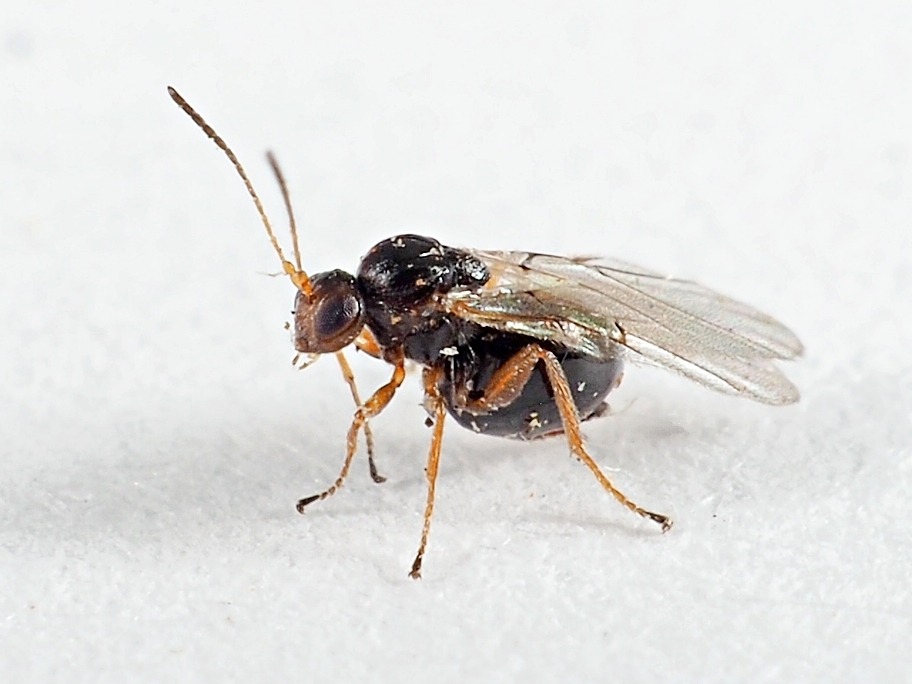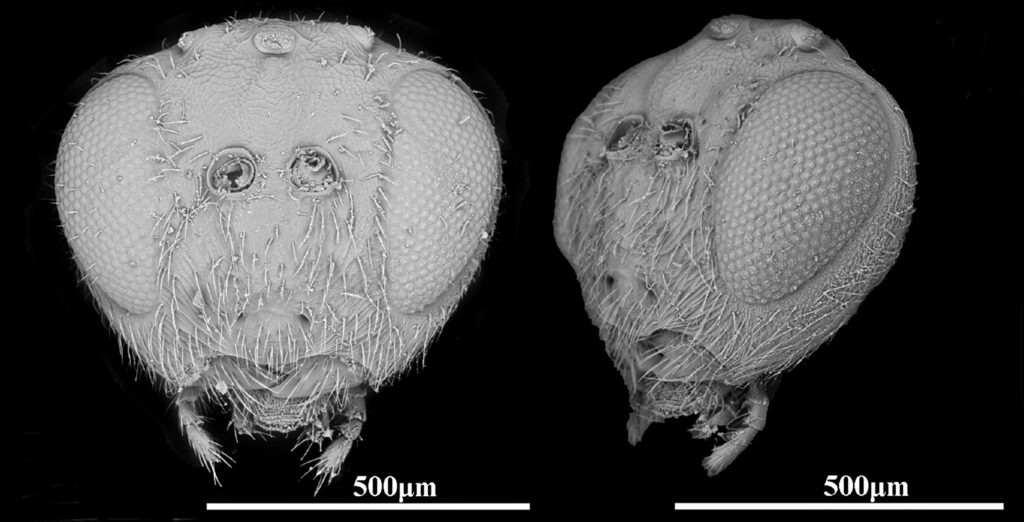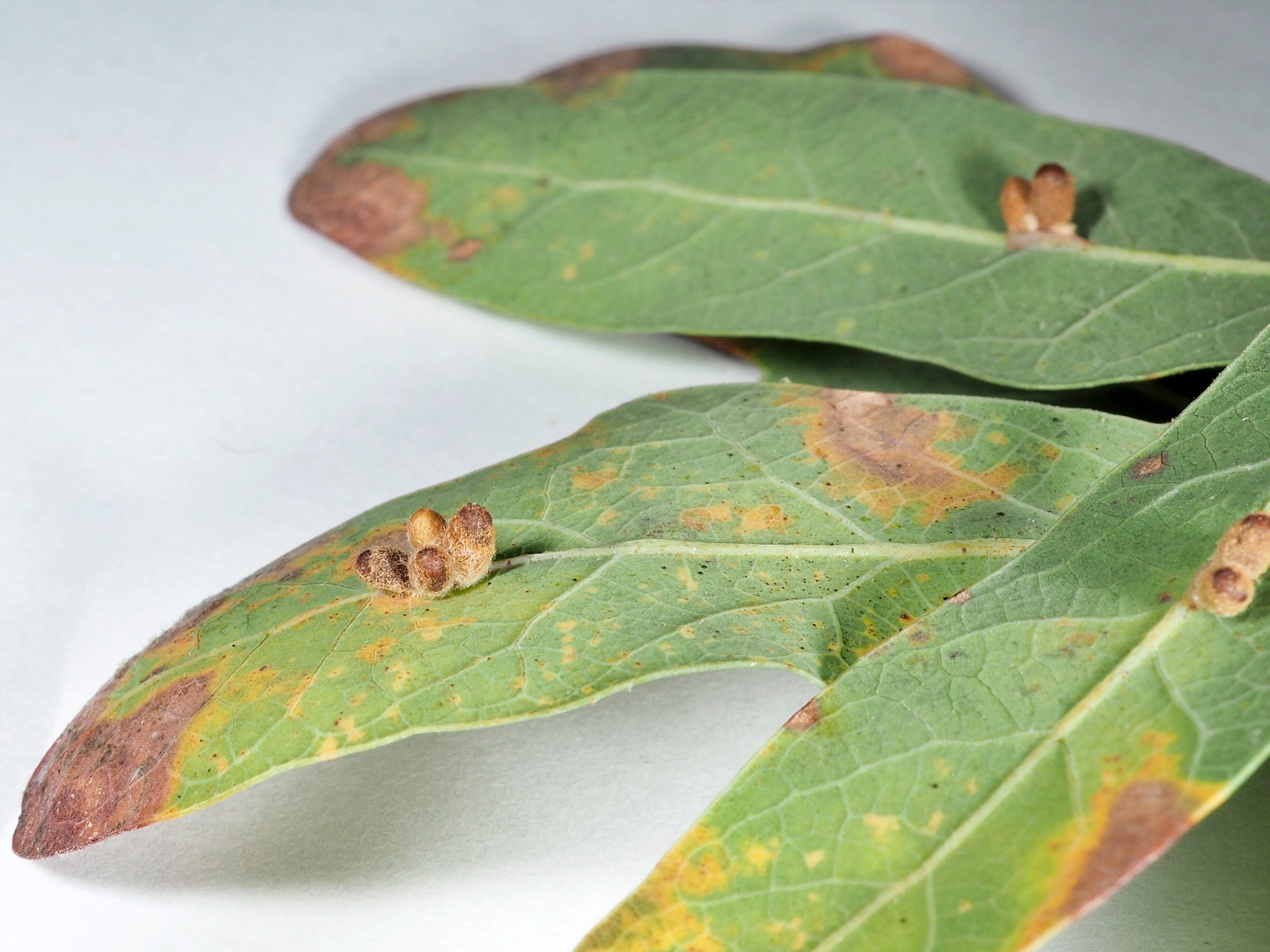
Many Fort Worth and area residents have explored the Garden for years. They may think they know every corner, every path and every tree.
In fact, our own Garden holds many surprises. For example, a new species of gall wasp was recently identified on Garden grounds. The story of the wasp’s discovery has much to tell us about the importance of citizen science, the diversity of life around us and the many mysteries waiting to be uncovered in our own backyards.
Introducing the Gall Wasp
Gall wasps are tiny insects, often about the size of a mosquito, in the Cynipid family. They get their common name from a distinctive part of their lifecycle. Gall wasps lay their eggs on trees and then induce the tree to grow a layer of tissue around the egg called a gall. (The mechanism behind this process is still unknown.) When the eggs hatch, the larvae, safe from predators, eat the tissue of the gall to grow. In time the larvae transform into adult wasps, which then break out of their small, safe home into the wide world.
They don’t have much of a life after that, although presumably it is satisfying enough for the gall wasp. If they can avoid being eaten by birds, lizards or other predators, the primary goal of a male wasp is to find a female wasp. The goal of a female wasp is to lay eggs that will begin the process all over again. Females don’t always need male wasps to help in this process; many gall wasps reproduce asexually.

One reassuring fact for humans who usually run screaming from all things wasp-related: gall wasps don’t sting.
Different wasps lay eggs on different plants, and each gall is different. Some form large lumps on tree limbs, others create fruit-like balls that hang from branches, and still others appear as small hard bumps on leaves. Oak trees are favorite habitats of gall wasps, although they can grow on a wide variety of trees and herbaceous plants.
Discovering Druon laceyi
Kimberlie Sasan, BRIT herbarium and research assistant, first grew interested in gall wasps as an outgrowth of her long fascination with moths. She soon realized that identifying the wasps was difficult, even when working with scientists and amateur naturalists on online forums such as iNaturalist, a social network that allows users to crowdsource species identification and record the occurrence of plants, animals, insects, fungi, etc.
“I’ve been very active on iNaturalist for a long time, but then I started finding these galls that no one could identify,” says Sasan. “I would post photos and ask if anyone had seen anything like it, was this new, could anyone help? In time, a community grew up of people fascinated with these wasps.”
Another frequent user of iNaturalist and individual interested in gall wasps is BRIT Research Assistant Bob O’Kennon. In 2020, O’Kennon contacted Sasan about a gall wasp he had discovered on a lacey oak (Quercus laceyi) on the Garden grounds. Sasan agreed that she had never seen anything like this particular wasp.
Sasan’s next step was to take some the galls home in the fall of 2020 and tend them until the adult wasps hatched in the spring of 2021. This allowed her to photograph the insect and preserve several of the wasps for further study.

The next step was to involve an insect expert. Sasan and O’Kennon worked with entomologist Y. Miles Zhang with the US Department of Agriculture Systematic Entomology Lab. Zhang further studied the wasp and conducted genetic testing to establish that this was a novel undescribed species. The paper announcing their results was published this July 20 in the journal Zootaxa.
More to Discover
Sasan anticipates many more species of gall wasps await official recognition by science. Sasan is one of the founders of a website devoted to the identification of insects that form galls, called gallformers.org, and she is aware of dozens, if not hundreds, of the insects that remain unidentified.
In fact, it seems that whenever experts go looking for gall wasps, they find them. A January 2022 article in Texas Monthly describes the work of Rice University associate professor Scott Egan, who, with his students, has discovered multiple species of previously unknown gall wasps on campus oak trees. Scientists have only begun to understand the diversity of this family of insects.
“It’s such an open field,” says Sasan. “We don’t know what’s ahead of us–and it’s really exciting.”
It’s also a good reminder that even the places we think we know are teeming with hidden wonders waiting to be discovered.





